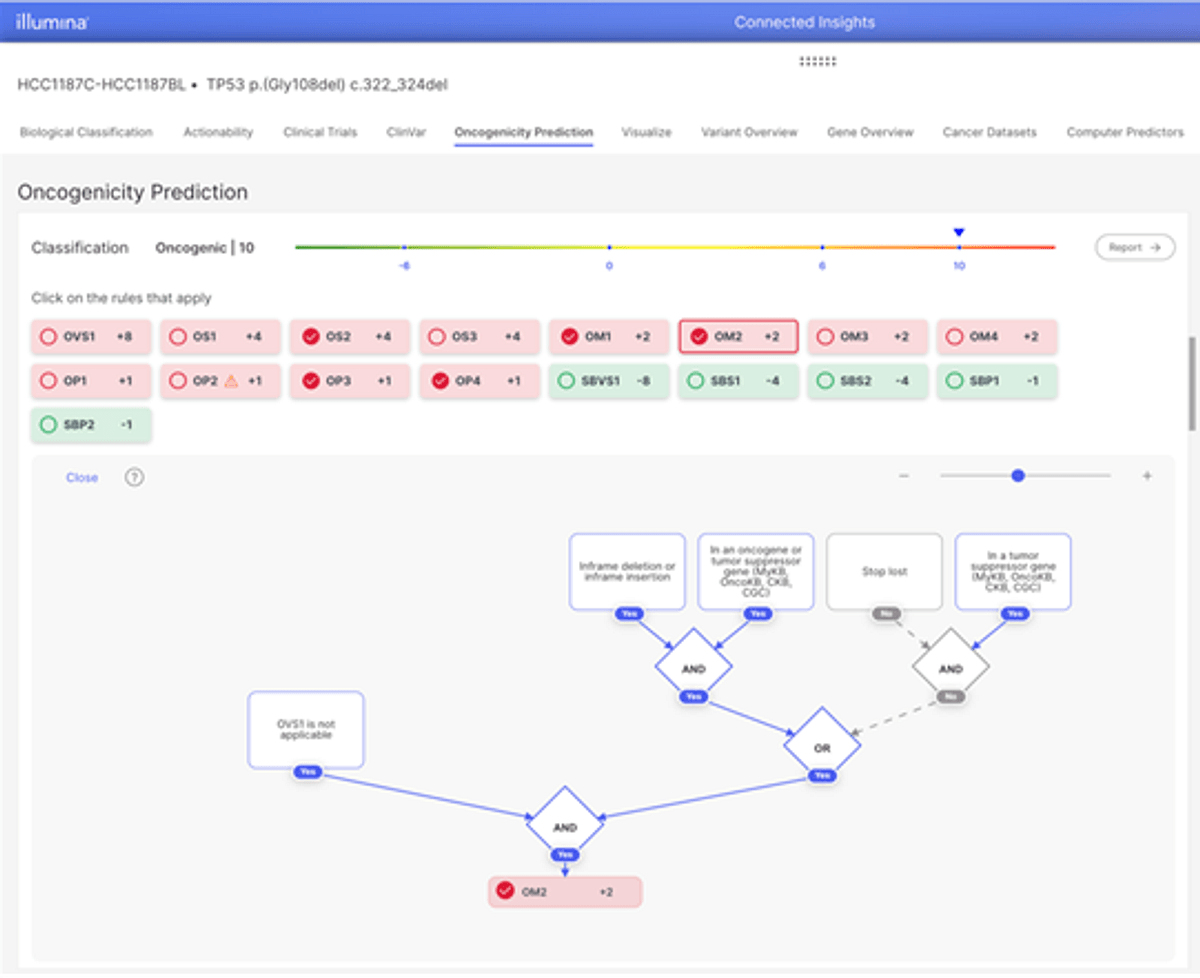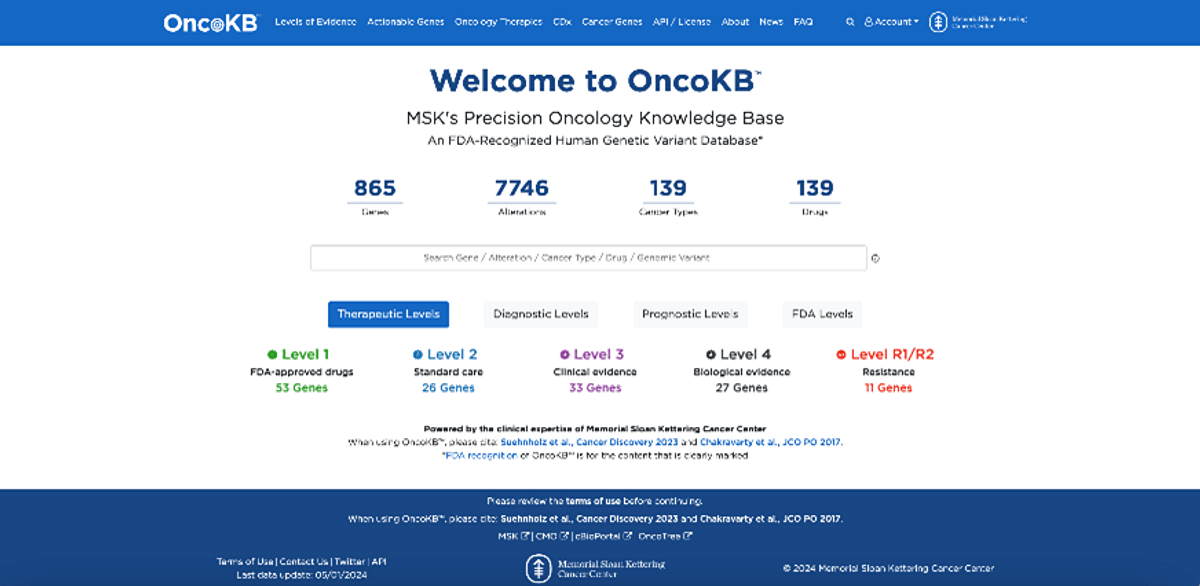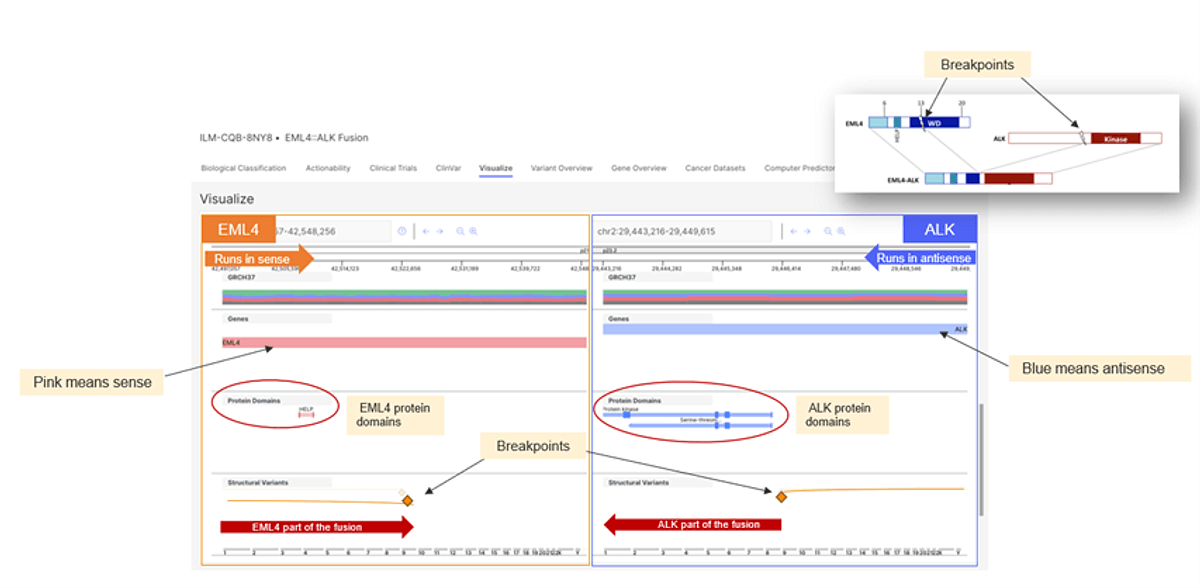- Home
- News & Updates
- Connected Insights v4.0: OncoKB™, automated oncogenicity classification, powerful fusion variant interpretation tools, and more
-
Illumina Connected Insights
-
Product updates
- 06/05/2024
Connected Insights v4.0: OncoKB™, automated oncogenicity classification, powerful fusion variant interpretation tools, and more
Our most highly anticipated release to date, Connected Insights v4.0 provides our users with new functionality enabling interpretation of somatic oncology variants with more confidence and evidence than ever. See the latest software release by requesting a demo.
Connected Insights 4.0 product line enables somatic oncology NGS customers to go further with their variant data, faster and more comprehensively than ever. The latest release provides users with new capabilities enabling automation of guideline-based oncogenicity classifications, access to rich new knowledge sources such as OncoKB from Memorial Sloan Kettering, and powerful tools for classification, interpretation, and visualization of fusion variants with more confidence.
The Illumina Connected Insights product line enables customers to perform variant interpretation through report generation and serves as a critical component of the Illumina Connected Software portfolio. Building on version 3.0 released in February. Connected Insights v4.0 contains significant advances in interpretation functionality, including:
- Automated, guideline-based oncogenicity classification
- Integration of OncoKB, in addition to new smart literature search options (Mastermind, LitVar) as part of 55+ comprehensive knowledge sources now available
- Enhancements to QC and interpretation capabilities for fusions: breakpoint and protein domain plots, total depth and VAF, QC metrics, and powerful fusion visualizations
Let’s dive into a few of the new features that make Connected Insights v4.0 our most anticipated release yet:
Automated Oncogenicity Classification

Most recent oncogenicity classification guidelines, published in 2022, aim to standardize classification of variants to improve quality and consistency in variant interpretation. Connected Insights v4.0 introduces new capabilities to automatically calculate oncogenicity classification based on these recent guidelines, enabling users to easily calculate, understand, curate, and report variants in a more streamlined manner than ever before. Leveraging proprietary Illumina AI algorithms and pulling from a comprehensive set of sources (including previously curated variants) as predictors, Connected Insights oncogenicity classification provides users with an automated score paired with an evidence map of results where estimated scores are further explained. Connected Insights’ automated guideline-based oncogenicity classification enables users to:
- Maintain compliance with the latest oncology-specific guidelines
- Save time on scoring and prioritizing variants manually
- Drive consistency and standardization of oncogenicity calculation among lab members
- Leverage evidence-based map to ensure transparency of results
New curated knowledge source: OncoKB

Pulling relevant information on drugs, guidelines, and clinical trials from trusted oncology knowledge bases is critical to comprehensive variant interpretation and reporting for oncology research. Connected Insights version 4.0 now provides access to over 55 different external knowledge sources for variant prioritization, including the direct integration of OncoKB, a precision oncology knowledge base from Memorial Sloan Kettering. With over 850 genes, 7.7k variants, and 130 cancer types, OncoKB is recognized by researchers worldwide as a trusted source that provides accurate and up-to-date information about the biological implications of cancer gene alterations. New additional external knowledge sources are now also linkable within Connected Insights v4.0, LitVar 2.0 and Genomenon Mastermind, further enabling our customers to interpret and prioritize variants with confidence by providing access to the most comprehensive, evidence-backed suite of knowledge sources.
Advanced fusion interpretation and visualization capabilities

Latest breakthroughs within oncology recognize fusions as a critical component in understanding cancer, with recent studies finding fusions as driving the development of 16.5% of cancer cases. Interpretation of fusions requires a robust set of QC steps and powerful variant calling algorithms to determine true events and understand significance. Connected Insights v4.0 introduces exciting new features to provide users with a toolkit for interpreting fusions – these include:
- Automated DNA & RNA upload into one case - streamlining data upload from the same or different DNA and RNA assays
- Fusion plots with breakpoints and protein domains – visualizing breakpoints and protein domains for fusion partners in a single view while completing KB information and IGV views for streamlined fusion interpretation
- New fusion specific QC metrics - providing total depth and VAF metrics for fusions
Other key features
Additional Connected Insights v4.0 features include:
- Variant count in past cases – Streamline variant interpretation by providing counts for all PASS variants interpreted in lab data, with a breakdown per disease
- Custom annotations – Add custom information (categorical, numerical, frequency) to variants to facilitate improved variant filtering and prioritization
- VAF and Total Depth for structural variants – Leverage key metrics including total depth and VAF to assist with downstream variant interpretation
- Separate section for VUS variants in report – View reported variants of unknown significance (VUS) with more ease, now in a separate report section
Learn More
The Connected Insights v4.0 release is packed full of efficiency and usability gains, and this blog has only touched the surface. Visit the Connected Insights page to learn more about our technology and speak with a specialist. Also, if you are interested in connecting with the growing community of users, please also let us know!
*The Connected Insights product line is inclusive of Connected Insights and Connected Insights-Research, available in select countries. Connected Insights connects via API-calling to > 55 external knowledge sources
M-GL-02880